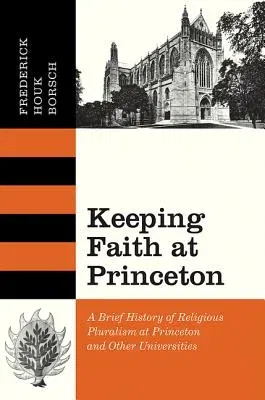An inside look at how religious diversity came to Princeton
In 1981, Frederick Houk Borsch returned to Princeton University, his
alma mater, to serve as dean of the chapel at the Ivy League school. In
Keeping Faith at Princeton, Borsch tells the story of Princeton's
journey from its founding in 1746 as a college for Presbyterian
ministers to the religiously diverse institution it is today. He sets
this landmark narrative history against the backdrop of his own quest
for spiritual illumination, first as a student at Princeton in the 1950s
and later as campus minister amid the turmoil and uncertainty of 1980s
America.
Borsch traces how the trauma of the Depression and two world wars
challenged the idea of progress through education and religion--the very
idea on which Princeton was founded. Even as the numbers of students
gaining access to higher education grew exponentially after World War
II, student demographics at Princeton and other elite schools remained
all male, predominantly white, and Protestant. Then came the 1960s.
Campuses across America became battlegrounds for the antiwar movement,
civil rights, and gender equality. By the dawn of the Reagan era, women
and blacks were being admitted to Princeton. So were greater numbers of
Jews, Catholics, and others. Borsch gives an electrifying insider's
account of this era of upheaval and great promise.
With warmth, clarity, and penetrating firsthand insights, Keeping Faith
at Princeton demonstrates how Princeton and other major American
universities learned to promote religious diversity among their
students, teachers, and administrators.

